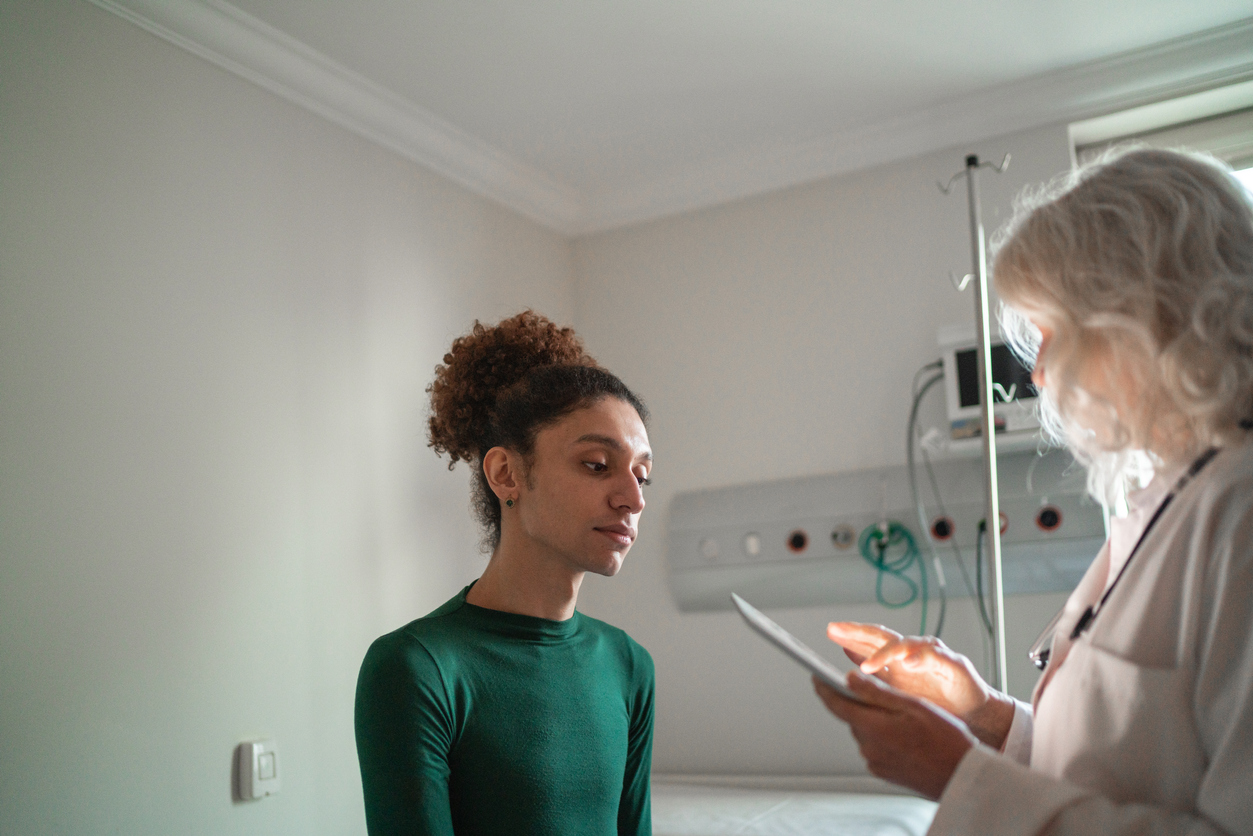
Every person should be able to access health care without fear of discrimination. Unfortunately, for people of color and LGBTQA people, that is not always the case, and for the population of LGBTQA people who are also racial minorities, seeking health care can be a double whammy of discrimination.
Forty-two percent of LGBTQ adults identify as people of color. (1)
- 21% identify as Latino/a
- 12% identify as Black
- 2% identify as Asian
- 1% identify as American Indian and Alaska Native
Lesbian, gay, bisexual, trans, questioning, and asexual (LGBTQA) individuals experience significant disparities in physical and mental health outcomes, with higher rates of anal cancer, asthma, cardiovascular disease, obesity, substance abuse, and suicide. “Sexual minority women report fewer lifetime Pap tests, transgender youth have less access to health care, and LGBTQ individuals are more likely to delay or avoid necessary medical care compared to heterosexual individuals.”(2)
When it comes to racial minorities, the National Academy of Medicine (NAM) reported that black people were sicker and had shorter lives not because of poverty, but because “racial and ethnic minorities receive lower-quality health care than white people – even when insurance status, income, age, and severity of conditions were comparable….”(3)
Explicit vs. Implicit Bias
Explicit bias is when attitudes and beliefs one has are easily accessible and consciously recognized and controlled. Implicit bias refers to attitudes and beliefs outside of one’s conscious awareness that are acted on automatically; these biases are also called negative stereotypes or unconscious bias.
Implicit bias impacts minority populations across racial and LGBTQA lines. Although healthcare students and professionals report explicit bias toward racial and gender minorities, this type of bias can be consciously controlled when interacting with patients (with proper education and cultural competence training), but implicit bias is harder to recognize.
Read our post “7 Teaching Strategies for Treating LGBTQ Patients”
Studies of implicit bias also suggest that it is harder to overcome. The best time to address the issue of bias is early in the professional educational process. Bias-reduction programs for undergraduate students show a marked reduction in explicit bias, and programs providing education plus contact with LGBTQ individuals showed the best results. Another study showed medium effect when students were presented with “biographical vignettes” of hypothetical LGBTQ patients.(2)
Creating Simulations
To date, the majority of implicit bias reduction trainings for healthcare students have focused on solving for implicit bias toward racial and ethnic minorities. A gap exists regarding reducing implicit bias toward LGBTQA patients, but given the effectiveness of the trainings regarding racial bias, there is little to lose by adapting bias reduction education for sexual and gender minorities as well.
Effective strategies for reducing ethnic and racial biases include:
- Increasing bias awareness
- Perspective taking
- Seeking counter-stereotypic information
These strategies could be adapted for LGBTQ populations too. In order to promote equal access to quality health care for LGBTQ patients of color, educating students to be aware of and address implicit bias toward vulnerable populations is critical. Most providers believe issues regarding health care for these populations should be covered more thoroughly in school curricula. Currently, only two to five curricular hours are spent on the medical needs of LGBTQ patients.
Designing simulation scenarios around members of the LGBTQA+ community, and specifically around queer people of color, will give students the knowledge they need to effectively care for these populations.
“Bias-focused educational interventions were effective at increasing knowledge of LGBTQ health care issues. Experiential learning interventions were effective at increasing comfort levels working with LGBTQ patients. Intergroup contact was effective at promoting more tolerant attitudes toward LGBTQ patients. Despite promising support for bias education in increasing knowledge and comfort levels among medical, nursing, and dental students or providers towards LGBTQ persons, this systematic review did not identify any interventions that assessed changes in implicit bias among students or providers.”
Using manikins with medium and dark skin tones and sourcing standardized patient (SP program with LGBTQ and minority actors are other ways to make students aware of possible subconscious bias and address it before they enter the workforce.
- “People of Color,” Funders for LGBTQ issues, https://lgbtfunders.org/resources/issues/people-of-color/
- Morris, M., Cooper, R.L., et al. “Training to reduce LGBTQ-related bias among medical, nursing, and dental students and providers: a systematic review,” BMC Medical Education, Aug. 30, 2019. https://bmcmededuc.biomedcentral.com/articles/10.1186/s12909-019-1727-3
- Bridges, K. “Implicit Bias and Racial Disparities in Health Care,” Human Rights Magazine, Vol 43 No. 3: The State of Health Care in the United States, American Bar Association. https://www.americanbar.org/groups/crsj/publications/human_rights_magazine_home/the-state-of-healthcare-in-the-united-states/racial-disparities-in-health-care/






